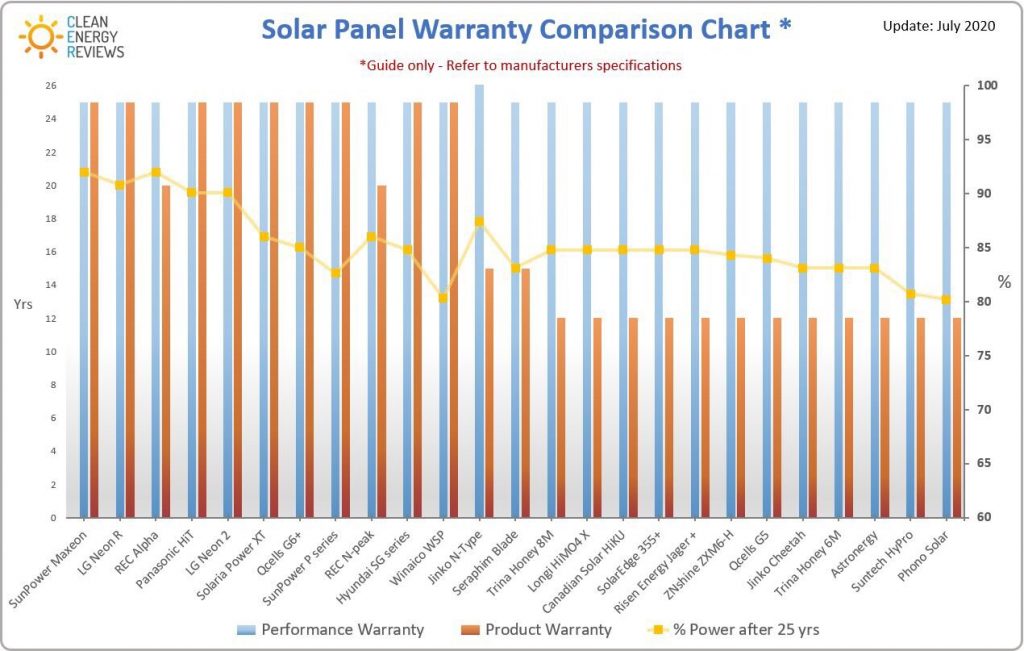Factors in Choosing a Quality Solar Panel
Selecting a quality solar panel from the hundreds of different models and manufacturers can be a very difficult task. Here we provide a guide to choosing the best panels based on quality, efficiency, reliability, performance and return on investment.
solar photovoltaic (PV) modules or simply solar panels have not changed much in basic function over the last 30-40 years. Virtually all solar panels still use a series of silicon cells to convert sunlight to DC electricity. What has changed dramatically is the efficiency of the cells and more so the huge cost reduction to manufacture panels, which has come down by over 80% since 2008.
How to Choose a quality Solar Panel
Unlike solar inverters, the biggest problem when comparing solar panels is they generally look very similar with nothing obvious to distinguish between high and low quality products. Unfortunately many solar installers and customers only have the glossy brochure to go by, which can easily baffle people with clever marketing and slogans. Below we explain how to sort through the marketing jargon and understand what really makes a quality solar panel.
What is a Tier 1 solar panel?
The common ‘Tier 1‘ rating was developed by Bloomberg New Energy Finance Corporation to rate solar panel manufacturer’s in terms of financial stability. It does not mean a panel offers the highest performance or quality. The Tier 1 rating can be somewhat misleading as it does not guarantee and panel is free from defects or will perform over the life of the system. This is why the solar panel manufacturers reputation and history are just as important as their perceived quality. SunPower and LG are two manufacturers widely known as producing some of the highest quality solar panels with low degradation over time and leading warranty conditions, however these panels also come at a premium price. Other trusted, quality solar panel manufacturers inlcude REC, Winaico and QCELLS
Determining a quality solar panel is made more difficult as it is not something which can be pulled apart and checked; panels can only be assessed using specialised equipment which highlight small faults or hot spots. However, this can change once the panels are installed outside in the weather for a few years. The sun’s UV radiation and high summer temperatures create extreme conditions for any roof top mounted solar panel and it can take 5 years or longer before any potential quality issues become apparent. This is why the manufacturer’s warranty period, service history and reputation are essential to selecting a quality solar panel.
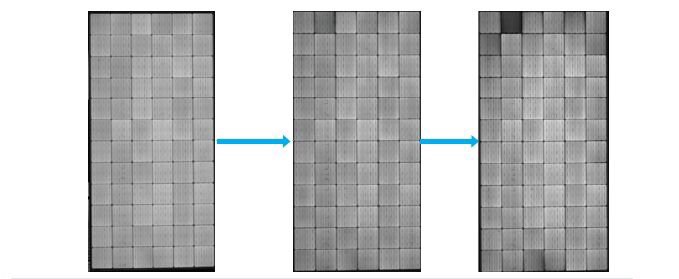
PVEL independent test labs perform rigorous testing to determine the most reliable solar panels.
Solar PV technology is constantly evolving and many new panel technologies have only been on the market for a few years. Solar panels ‘should’ have a lifespan of 25+ years, so it is vital to choose a manufacturer which has a solid reputation, good track record and is likely to still be in operation in the future to backup any potential warranty issues.
Solar Panel Warranty
The standard warranty period for solar panels sold around the world is a 10 year product warranty, also known as a manufacturers warranty, and 25 year performance warranty.
1. Product Warranty
The product warranty is the manufacturers warranty which protects the customer against defects which occur from both manufacturing issues and component or material failures. This means the manufacturer must either replace or provide a refund for solar panels which fail within the product warranty period. In general solar PV manufacturers must provide the minimum 10 year product warranty but a growing number of premium manufacturers (highlighted below) offer 12, 15, 20 and even 25 year product warranties.
2. Performance Warranty
The performance warranty, also referred to as the ‘power output warranty‘ ensures that the solar panel still produces a minimum power output after a specific amount of time.
Once installed outside and exposed to sunlight, UV radiation, high temperaturers and weather, all solar panels will slowly reduce power output over time. Typically the first year is 2-3% (due to the effects of LID), while the remaining 24 years will be much less at 0.5 to 0.7% per year.
The common industry standard is 80-83% power output retained after 25 years however some high-end manufacturers such as Sunpower and LG guarantee 88-92% power output on most modules after 25 years of use. There is also a growing number of manufacturers now offering 30 year warranties on the unique dual glass and bifacial solar modules.
Solar Panel Warranty Comparison Chart
The yellow line indicates the minimum power rating after 25 years of use as specified under the various manufacturers performance warranty documents. NOTE, without an obvious defect it is almost impossible to determine if the rated power output of a panel is within tolerance without very specialised equipment. With this in mind we recommend taking the manufacturers reputation and service history into consideration. A local support office should also be a must.
Latest solar panel warranty chart 2020
The latest clean energy reviews solar panel warranty comparison chart now includes Panasonic, Solaria, Astronergy, ZNShine and the all latest release panels from the worlds leading manufacturers.
Solar Panel Product and Performance Warranty Comparison
Premium Solar Panel Manufacturers
Here is our short list of the best quality and most reliable panel manufacturers based on history, service, quality, real world performance and our feedback from solar industry professionals. See the full details of the most popular modules from the leading manufacturers using the links below.
SunPower
LG
REC
Solaria
Panasonic
Q cells
Winaico
Higher price does equal higher Quality
Like most things, premium equipment comes at a premium price. SunPower are considered the world leader but generally cost around 30% more than the competition. LG panels also come at a higher price but have a range of panels which are more competitively priced and widely available which put them at the top of the list when it comes to both quality and value for money. Panasonic supply well proven, high-quality panels available in north America along with Solaria which are now available in Australia & Europe. Winaico sits is the middle and is well regarded due to reliability, performance and excellent customer service. REC and Qcells have a wide range of panels known for quality, innovation and service.
Return on Investment
When considering Return On Investment (ROI) it is necessary to take into account performance and degradation rates over the life of the panel. Lower cost solar panels will mean lower upfront costs and may perform well for many years but over time (usually 5-8 years) most high quality panels will have lower degradation, less chance of failures and be operating closer to the rated power rating which means higher energy yields and greater returns. After 10 to 15 years the higher quality panels will no doubt be out performing low quality panels by 10% or more which is a considerable amount when you calculate this over the annual power generation.

Comparison of rated power output over the expected life of a solar panel – Image credit SunPower Corp
The risk of panel failure or performance issues is lower with known high quality manufacturers who have a solid reputation, good track record and have independent testing to verify long term performance. Company financial standing is also important to ensure the warranty is honored well into the future. However despite the perceived company viability several large solar manufacturers like SunPower have had serious financial difficulties or even become insolvent over the years so there is a growing trend for manufacturer warranties to be backed up by large third party insurance companies or organizations
Value Solar Panel Manufacturers
Besides the premium panel brands there are many well regarded manufacturers offering a wide range of quality, affordable panels. The most well known of these manufacturers are Jinko Solar, Canadian Solar and Trina Solar. These top three have been on the market for many years and have proven to provide a good to very good level of reliability, service and warranty support. Hyundai, SunTech, JA Solar and Phono Solar are also very well regarded with a good track record.
Below is our list of the best ‘value’ solar panel manufacturers. LONGi Solar is the most recent manufacturer in the list and has recently become the worlds largest monocrystalline solar panel manufacturer by volume. See more details in section below. See the latest list of the best solar panel in 2020.
Trina Solar
Jinko Solar
Canadian Solar
LONGi Solar
Hyundai Solar
SunTech
Phono Solar
JA Solar
Risen Energy
Seraphim
PVEL Independent Panel Testing
One of the world’s leading independent solar module testing and performance services PVEL in association with DNV-GL produce the annual ‘PV Module Reliability Scorecard Report’ based on the results from the rigorous testing procedures. Unfortunately not all the different models from the many manufacturers are tested as the manufacturer has to agree to participate.
The latest 2020 PV module scorecard recently released consists of four durability tests explained below. Over the last few years most of the top rated solar panel manufacturers have consistently scored as a ‘Top performer’ among many of the world’s leading solar brands tested. A top performer does not mean they are ranked as number 1 but among the highest performing module’s in the group with no severe degradation or failures.
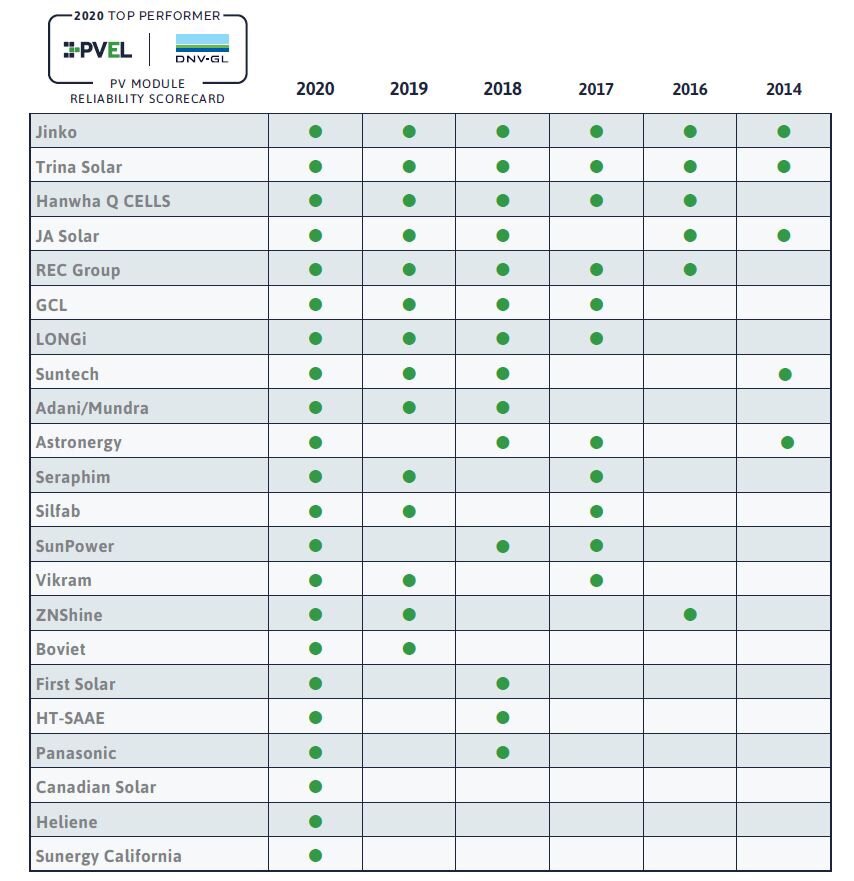
Summary table of the latest results from the 2020 PVEL PV module reliability scorecard.
The four extreme solar module durability tests
The scorecard rating is based on the four rigorous durability tests listed below which put panels through extreme temperature, humidity and loading to simulate the most severe real world conditions.
Thermal cycling test – Measures the module durability in extreme temperatures resulting in expansion and contraction.
Damp heat test – Measures module durability in high temperature and humidity and examines for signs of moisture ingress or corrosion.
Dynamic mechanical load test – This involves cyclic loading in extreme conditions causing module bending to simulate high wind and snow loads.
PID or Potential induced degradation test – measures current leakage or loss of power under high voltage, temperature and humidity conditions.
LeTID - A Potential Problem
All solar panels suffer a small amount of power loss or degradation over time which is why the performance warranty allows for a specific amount of loss over a panels lifetime of 25 to 30 years. PERC cell technology increases panel efficiency and has been adopted by many of the world’s leading solar panel manufacturers, however it has only recently become apparent that P-type PERC cells can suffer what is known as LeTID or light and elevated temperature induced degradation.
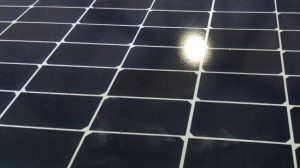
The LeTID phenomenon is similar to the well known LID or light induced degradation where a panel will lose 2-3% of the rated output in the first year of UV exposure and 0.5% to 0.8% per year afterwards, although the losses due to LeTID have been found to be as high as 6% in the first year and if not fully accounted for by the manufacturer could lead to poor performance and potential warranty claims.
Fortunately N-type silicon cells from LG, Sunpower and the new N-peak series from REC do not suffer the effects of LeTID. Also several manufacturers who use P-type poly and mono PERC have developed processes during manufacture to reduce or eliminate any LeTID losses, this includes Q Cells who are the first to claim anti-LeTID technology on all panels.
Jinko Solar Trina Solar, Longi Solar and GCL have all recently gained certification against LeTID from TÜV Rheinland. Other who also claim to have reduced or accounted for the effect of LeTID include REC, Winaico and Canadian Solar.
Quality Solar Panels Made In China
China is now considered one of the world leaders in crystalline silicon wafer and solar panel manufacturing with many reliable well established Chinese companies such as JA solar, Jinko Solar, Trina Solar and Risen which are constantly improving manufacturing quality, panel performance and spending big in research and development. Although there are still many lower quality panels coming out of China so always ensure a company has a good track record before purchasing any unfamiliar brand.
Solar module super league by PV Tech – Several of the worlds leading solar module manufacturers with the majority based in China have formed the Solar Module Super League (SMSL) shown below. The latest additions to the league in 2019 were First Solar and Risen Energy. Together these manufacturers supply more than 60% of the worlds solar panels.
Trina Solar
Jinko Solar
Longi Solar
Risen Energy
Canadian Solar
Astronergy
Hanwha Q cells
JA Solar
First Solar
GCL-Si
No only do these manufacturers supply more than half the the worlds solar panels but they hold many of the most recent records for the most efficient mono and poly silicon crystalline cells using the latest advancements in cell technology including PERC, PERT and bifacial.
Many big name solar manufacturers from Europe and the US have also moved manufacturing to places like China, Malaysia and the Philippines over the years and as much of the process is actually automated the quality of products is extremely high, so long as you know which brands to choose. Q cells, JA solar and Trina Solar are well regarded by many Australian installers.
LONGi Solar has recently emerged as the largest supplier of mono-crystalline silicon cells in the world and along with Jinko Solar is leading the push towards the next generation of high efficiency low cost mono PERC panels.
Solar Panel Efficiency
The efficiency of a solar panel is a measure of the amount of solar irradiation or solar energy which falls on an specific area and is converted into electricity.
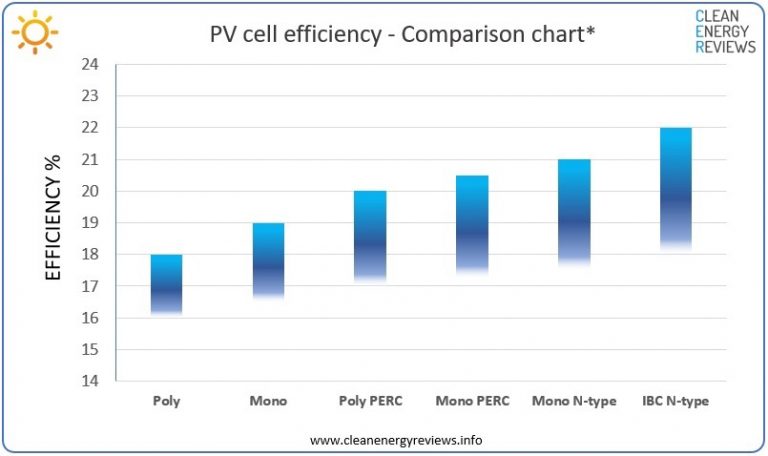
The term efficiency is thrown around a lot but a slightly more efficient panel does not always equate to a better quality panel. Many people consider efficiency to be the most important criteria when selecting a solar panel but what matters more is the quality as explained earlier. Quality is related to real world performance, reliability, company history and manufacturers warranty conditions.
